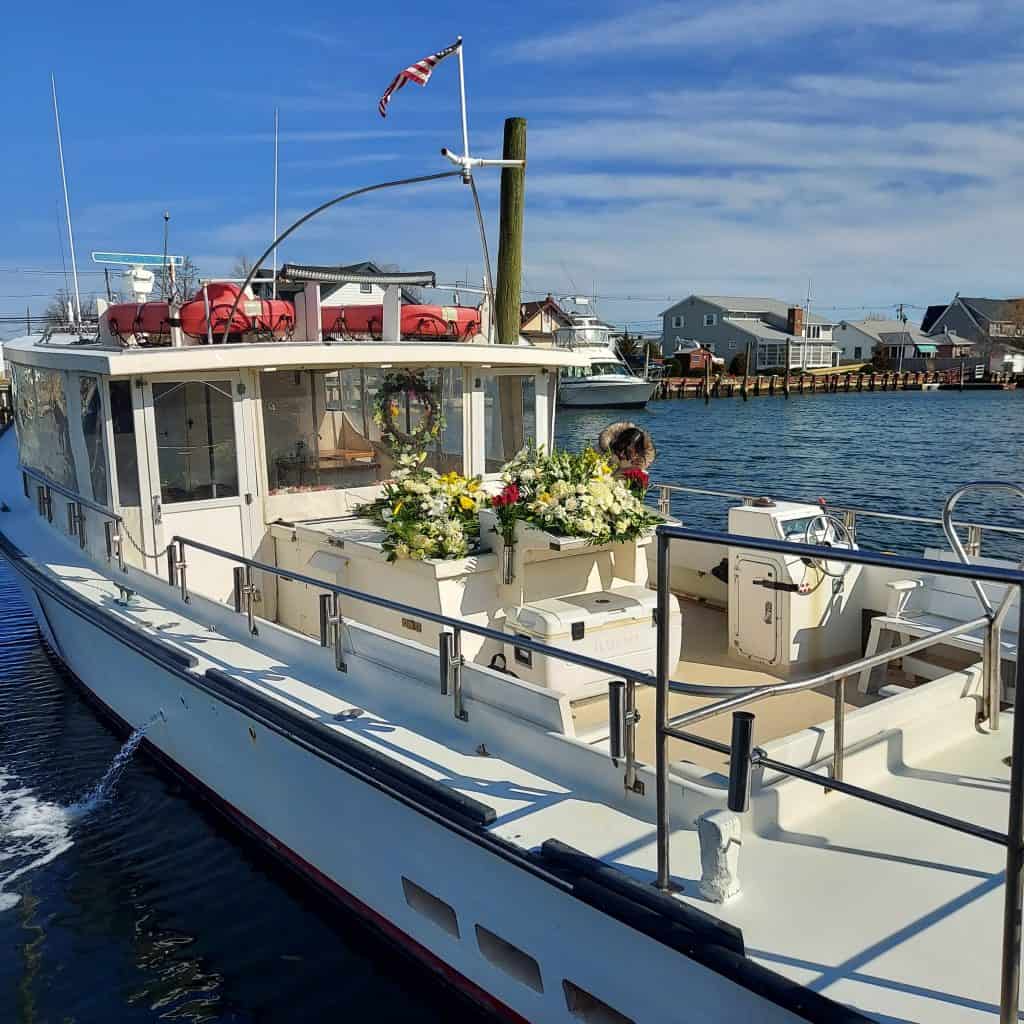Burials At Sea in Great Neck, NY
Explore serene and respectful burials at sea in Great Neck, NY, offered by Eternal Peace Sea Burials, a perfect tribute to your loved ones.


In Great Neck, NY, choosing a burial at sea with Eternal Peace Sea Burials is a beautiful way to say goodbye to those we hold dear. The idea of returning to nature most serenely and gently makes this option so special. Surrounded by the vast, open waters, a sense of peace and eternity embraces the moment. Our commitment at Eternal Peace Sea Burials is to provide an experience that reflects the tranquility and majesty of the sea, allowing families to honor their loved ones in a setting that’s both timeless and respectful.
As we set sail from the shores of Nassau County, the gentle rhythm of the waves offers a comforting embrace. The horizon stretches endlessly, symbolizing the eternal journey of life. This natural setting provides a serene backdrop for families to reflect, honor, and celebrate the lives of their loved ones. It’s our privilege at Eternal Peace Sea Burials to guide you through this poignant experience, ensuring it’s handled with care, respect, and dignity.
Every sea burial is conducted with utmost respect and dignity, ensuring a serene and memorable experience for families in Great Neck, NY.
Our commitment to environmental responsibility in Nassau County sets us apart, as we offer eco-friendly burials that leave a minimal footprint.
With years of experience conducting burials at sea, our team provides empathetic and professional support, making us a trusted choice in Nassau County.

At Eternal Peace Sea Burials, we understand that every life is unique, and so should be its final tribute. That’s why we offer personalized burial at sea services. We aim to reflect the individuality of your loved one through customized ceremonies. From selecting a special location in the waters near Great Neck, NY to choosing sustainable, biodegradable urns, we ensure each service aspect is tailored to your needs. Our team, experienced in conducting respectful sea burials, stands ready to support and guide you through this important process.
Our commitment extends beyond just organizing the ceremony. We provide emotional support and professional guidance to the families in Nassau County. We understand the importance of this moment, and we strive to create a comforting and memorable atmosphere. By entrusting us with this sacred duty, you’re choosing a team that cares deeply and respects the gravity of this final farewell. At Eternal Peace Sea Burials, we’re dedicated to making this journey as smooth and meaningful as possible.

Conducting burials at sea in Great Neck, NY is not just a matter of personal choice; it’s also about being responsible towards the environment. At Eternal Peace Sea Burials, we are deeply committed to eco-friendly practices. We strictly adhere to all environmental regulations set by authorities, ensuring our sea burials are conducted in a way that’s respectful to the marine ecosystem. This commitment to the environment means we handle all the legal and environmental considerations, giving families in Nassau County peace of mind during their mourning.
In addition to being environmentally conscious, we ensure complete legal compliance for each burial at sea. Our team at Eternal Peace Sea Burials takes care of all necessary permits and documentation, ensuring that every ceremony is conducted lawfully and ethically. We recognize the importance of these details in providing a seamless and worry-free experience for our clients. Call 631-668-5800 and choose a service that honors your loved one and respects the delicate balance of our natural world.
Great Neck is a region on Long Island, New York, that covers a peninsula on the North Shore and includes nine villages, among them Great Neck, Great Neck Estates, Great Neck Plaza, Kings Point, and Russell Gardens, and a number of unincorporated areas, as well as an area south of the peninsula near Lake Success and the border territory of Queens. The incorporated village of Great Neck had a population of 9,989 at the 2010 census, while the larger Great Neck area comprises a residential community of some 40,000 people in nine villages and hamlets in the town of North Hempstead, of which Great Neck is the northwestern quadrant. Great Neck has five ZIP Codes (11020-11024), which are united by a park district, one library district, and one school district.
“During a time of mourning, allow us to set the resting place with a beautiful goodbye”